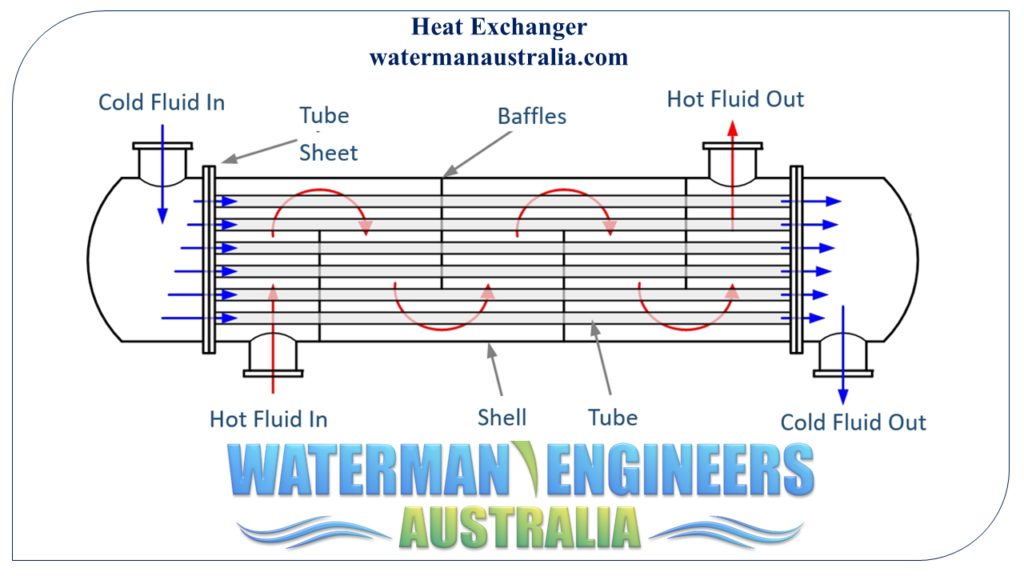The Designing of heat exchanger manufacturer Diaries

A heat exchanger is a device that allows for the transmission of heat between two different media without any physical contact between them. Heat exchangers work on the idea that thermal energy can be transferred from a hot fluid to a cold fluid. Heat exchangers provide for precise temperature regulation, improving energy efficiency and system functionality by transferring heat between two fluids.
Power plants, chemical plants, HVAC (heating, ventilation, and air conditioning) systems, supermarkets, and many more all employ heat exchangers. They can be found in commonplace home products like air conditioners and water heaters.
In this article, we'll learn about heat exchangers, what they are, how they work, and the different kinds there are. The article also details the common uses and factors to consider when choosing a heat exchanger.
Nevertheless the mechanical (and thermal) structure of these choice exchangers tends to be of the proprietary nature which can reveal why several shoppers favor the attempted-and-tested shell and tube exchanger variety which however predominates for most crops.
Possibly tube minimal or regular wall thickness is specified. Tubes specified with normal wall thickness are much less expensive. Keep on with average wall thickness Except if superior strain, corrosive, or consumer specification mandates usually.
Traditional HFT heat exchangers also use a large number of flat tubes, but the look suffers from very low heat exchanger overall performance for the reason that it does not evenly distribute the refrigerant, a mix of gasoline and liquid underneath the impact of gravity.
For carbon metal S&T heat exchangers, the machines cost could be believed utilizing the guideline of $500/m2 of heat Trade area.
With Having said that, we’ve drawn up a list of all the critical parts of a furnace that you need to be aware of for a homeowner.
Recognizing tips on how to design and style and sizing these heat exchangers is vital in a number of industries like oil upgrading and refining, fuel processing, petro-chemical, and LNG. Listed here, we wander you in the whole procedure from start out to finish for designing an air-cooled heat exchanger.
Shell and tube evaporators use a number of tubes Designing of heat exchanger manufacturer within a larger shell to transfer heat. They’re sturdy and trustworthy, but could be bulky. These are extra frequent in commercial refrigeration systems.
The pressurized parts on the shell and tube exchanger are built to be in accordance that has a pressure vessel design and style code which include ASME VIII (1993) or BS5500 (1994).
, chemical/mechanical cleaning things to consider. The choice is concerning detachable bundle or not, straight or U-tubes, and type of heads—dished conclude or flange, and is also produced on The idea of no matter whether just one or the two fluids are fouling or not.
TEMA specifies the minimal baffle thickness, the utmost unsupported tube length, the clearances involving tubes and holes inside the baffles and amongst shell inside of diameter and baffle outdoors diameter. Two shell pass exchangers (see Figure two shell styles F, G or H) require a longitudinal baffle, which for File variety exchangers is welded on the stationary tubesheet. Leakage from the shell facet fluid in between the shell and also the longitudinal baffle edges must be minimized. When removable bundles are made use of, this leakage hole is sealed by adaptable strips or packing equipment. Determine 3 reveals a standard versatile strip.
The subsequent parts carry out a function predominantly connected to strain and fluid containment. Their design is completed in accordance While using the pertinent strain vessel code, see Stress Vessels.
The procedure knowledge sheet suggests which fluid is on the tube aspect and which fluid is on the shell facet. Test which the allocation is seem.
Observe which the mechanical style of the heat exchanger shall look at all attainable functioning instances. There can be working situations at low turndown exactly where the thermal enlargement is elevated, in comparison to the look case, as a consequence of increased cooling on the process side.
Fundamentals of Heat Exchanger Design is ideal for working towards engineers, along with for advanced undergraduate and graduate pupils in mechanical and aerospace engineering, Power engineering, and connected topics.